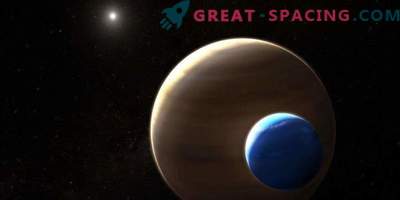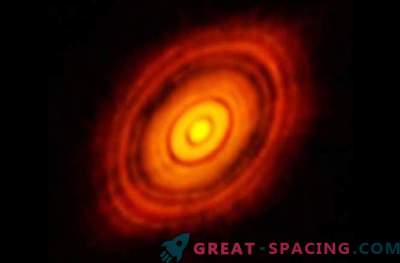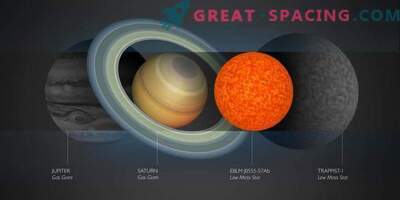
Artistic interpretation of the TRAPPIST-1 system
Scientists decided to check whether the terrestrial planets in the TRAPPIST-1 system can have gas giants. If so, we can better understand the process of forming our system.
Earlier this year, the Spitzer telescope surprised the whole world because it found a system with 7 planets in the territory of Aquarius. Three of them live in the habitable zone, where there is a possibility for the existence of liquid water and life.
But if the system resembles ours, is there a chance for the presence of gas giants? To understand, the researchers decided to study TRAPPIST-1 with a telescope at the Las Campanas Observatory. He is looking for exoplanets using the astrometric method - through the vibrations of the host star.
Thus, it was possible to determine the upper mass limit for any potential planet. It turned out that there are no objects on the territory of the system, more than 4.6 masses of Jupiter with an orbital period per year, as well as more than 1.6 masses of Jupiter and a 5-year period.

All 7 planets of the TRAPPIST-1 system easily fit into the orbital path of Mercury
It is important to understand that theories of system formation still have gaps that should be filled. At the very beginning, the Sun was surrounded by a gas and dust disk in which all the planets were born.
One theory says that everything starts with the accretion of a solid core, which holds enough material for gravity thrust. But there is an idea that gas giants could appear when a disk formed in the form of a spiral. The sleeves increased in mass and density until separate clusters were created.
The disadvantage of the first option is in the process of creating gas giants. But the Boss disk instability model explains that this can happen around dwarf stars. Therefore, gas giants may be located in the long orbits of TRAPPIST-1, which challenge the accretion theory, but not disk instability.











































